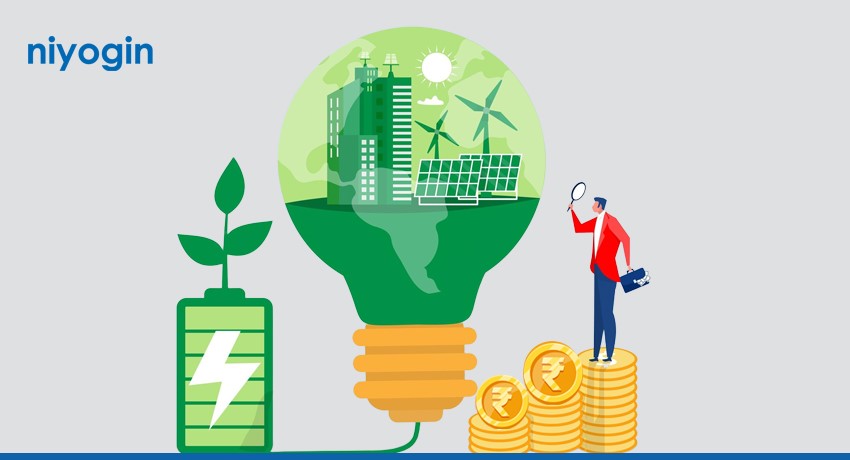In India’s rapidly evolving financial landscape, unsecured loans have become a popular avenue for quick funds. From bridging short-term cash flow gaps to funding personal aspirations, these loans offer flexibility but also demand a thorough understanding. Understanding the Indian Financial Landscape Unsecured loans, unlike secured loans, do not require collateral such as property or gold. Instead, lenders assess the borrower’s creditworthiness to determine the level of risk. Since assets do not back these loans, they often come with higher interest rates to compensate for the increased risk to the lender. India’s lending market is a dynamic mix of traditional banks, NBFCs, and rapidly growing fintech platforms. Borrowers must consider key factors such as credit scores (with CIBIL being the most influential), essential documentation like income proof and digital KYC, and varying interest rates based on lender type and creditworthiness. While fintech lenders offer quick approvals, they may charge higher interest rates than banks. Additional costs like processing fees, pre-closure charges, and penalties should also be evaluated. Digital lending is reshaping the market, but borrowers should ensure that platforms are RBI-registered to avoid fraud. Lastly, credit access and interest rates can differ regionally, with urban borrowers enjoying better access to formal credit than those in rural areas. Essential Tips for Borrowers Assess Your Needs: Borrow only what is necessary to avoid falling into a debt trap. Compare Offers: Don’t accept the first loan offer compare interest rates, processing fees, and repayment terms across multiple lenders. Read the Fine Print: Carefully review the loan agreement, paying close attention to repayment schedules, penalties, and hidden charges. Budget Wisely: Plan your finances to ensure timely repayments without straining your budget. Maintain a Strong Credit Score: Pay bills on time, keep credit utilization low, and avoid submitting multiple loan applications at once. Avoid Loan Sharks: Stay away from informal lenders with exorbitant interest rates; opt for RBI-regulated institutions instead. Be Cautious with Digital Lending: Verify the legitimacy of digital lending platforms before sharing personal details to avoid fraud. Understand the Recovery Process: While unsecured loans don’t require collateral, lenders can still take recovery actions, including follow-up calls, legal notices, and debt collection efforts. Being informed and cautious can help borrowers make responsible financial decisions while avoiding unnecessary risks. The Indian unsecured loan market is poised for continued growth, driven by increasing digital adoption, rising consumer demand, and government initiatives promoting financial inclusion. Increased regulation will also improve consumer protection. As technology advances, we can expect more personalized and accessible loan products tailored to the needs of diverse borrowers. Hence, unsecured loans can be a valuable financial tool when used responsibly. Thorough research, careful planning, and a clear understanding of the lending landscape are essential for Indian borrowers to navigate this market successfully and avoid potential pitfalls.
Month: April 2025
The Rise of Fintech in Solar Financing
India, blessed with abundant sunshine, has emerged as a global leader in solar power deployment. However, financing remains a major hurdle for many businesses and individuals looking to adopt this clean energy source. While bank loans are a common option, high interest rates and strict eligibility criteria often limit their accessibility. Solar’s Financial Roadblock The high upfront investment required for solar panel installation is often out of reach for many individuals and companies. While traditional bank loans are a common financing option, they come with high interest rates, increasing overall costs and making projects less attractive. Additionally, banks have stringent eligibility criteria, requiring significant collateral and a strong financial record, which many small businesses and homeowners cannot meet. The long approval process also delays projects, hindering India’s widespread adoption of solar power. Fintech Solutions: Revolutionizing Solar Financing Fintech companies are leveraging technology to create innovative solar financing solutions, addressing the challenges posed by traditional lending practices. Here’s how: 1. Streamlined Loan Applications Fintech companies make borrowing easier by offering simple, online loan applications that cut down on paperwork, unlike traditional bank loans which long forms and in-person visits can bog down. With the help of automated systems and data analytics, fintechs speed up loan approvals, making the process much faster than traditional banks’ more time-consuming procedures. 2. Data-Driven Credit Scoring Fintech companies use alternative data, such as payment history and energy consumption patterns, to evaluate creditworthiness, which opens up solar financing to individuals and businesses with limited credit histories that traditional banks might overlook. With advanced algorithms and machine learning, these companies can assess risk more accurately, resulting in better loan terms and lower default rates. 3. Pay-As-You-Go (PAYG) Models Pay-as-you-go (PAYG) solar models are revolutionizing access to clean energy, particularly for low-income households and communities. By allowing customers to pay for solar power in small, manageable installments, PAYG eliminates the significant barrier of large upfront investments. Furthermore, the integration of these systems with mobile payment platforms, especially prevalent in India with its high mobile penetration, facilitates easy and convenient transactions, further democratizing access to solar energy. 4. Securitization and Crowdfunding Fintech companies are exploring innovative financing mechanisms like securitization and crowdfunding to tap into new sources of capital for solar projects. This can help lower the cost of financing and increase the availability of funds. The Road Ahead To fully realize India’s solar energy potential, fostering the development and adoption of innovative financing solutions is crucial. This requires a multi-pronged approach, including strong government support through tax incentives, subsidies, and credit guarantees for emerging solar financing models. A clear and supportive regulatory framework, particularly for green bonds and related fintech solutions, is also essential to attract increased investment in the sector. Furthermore, raising public awareness about the advantages of these innovative financing options, coupled with sharing success stories, will educate potential users and encourage broader adoption. Finally, fostering collaboration between banks, financial institutions, fintech companies, and solar developers is key. Such partnerships will drive the creation of more accessible and user-friendly financing solutions over time. By implementing these strategies and cultivating a supportive environment, India can unlock unprecedented growth in solar power, paving the way for a cleaner, more sustainable future while simultaneously generating new business opportunities and stimulating economic growth.
How is Technology Helping to Transform Regulatory Compliance in Finance?
The financial industry, long entangled in intricate regulations and manual processes, is undergoing a profound transformation. Once considered a disruptor, technology has now emerged as the primary enabler in navigating the ever-evolving regulatory landscape. From combating financial crime to ensuring data privacy, technological advancements are redefining regulatory compliance, delivering unparalleled efficiency, accuracy, and transparency. The Flaws of Legacy Compliance Traditional compliance frameworks, weighed down by manual data entry, extensive paper trails, and isolated systems, are inherently vulnerable to a spectrum of operational and regulatory challenges. Firstly, the reliance on manual processes amplifies the risk of human error, where simple input mistakes can translate into significant regulatory breaches and costly financial penalties. Secondly, the sheer volume of compliance data necessitates time-consuming data processing, diverting valuable resources from strategic initiatives. Thirdly, the fragmentation of systems creates a lack of real-time transparency, making it exceedingly difficult to monitor compliance status and provide auditors with a clear, consolidated view. This opacity hinders the ability to promptly identify and address potential violations. Finally, the confluence of increasingly complex regulations and the persistent need for manual oversight have led to a dramatic escalation of compliance costs, placing a substantial financial burden on institutions. These limitations underscore the urgent need for technological solutions to modernize and streamline compliance processes. The Transformative Power of Technology Technological innovation is fundamentally reshaping regulatory compliance by automating processes, refining data analysis, and delivering real-time insights. Specifically, RegTech platforms, leveraging AI, ML, and cloud computing, automate compliance tasks and bolster risk management, while AI and ML analyze extensive datasets to detect financial crimes and streamline KYC/AML procedures. Cloud computing provides scalable, secure, and cost-effective compliance solutions, enabling seamless access to critical regulatory data while reducing operational overhead. Advanced data analytics tools facilitate enhanced risk detection and reporting, allowing financial institutions to identify potential regulatory breaches before they occur. A report by Deloitte indicates that implementing automated compliance solutions can lead to substantial reductions in compliance costs, sometimes by as much as 20-50% in specific areas like KYC/AML. Additionally, biometric technologies such as facial recognition and fingerprint scanning strengthen security and optimize customer verification processes, ensuring compliance with identity verification mandates. The Future of Compliance As technology continues to evolve, the future of regulatory compliance will be characterized by: Increased Automation: AI and RPA will further streamline compliance operations, reducing human intervention in routine tasks. Real-Time Monitoring: Advanced analytics will enable proactive risk management through real-time compliance tracking. Enhanced Collaboration: Cloud-based platforms will foster greater cooperation between financial institutions and regulators. Predictive Compliance: AI-driven tools will predict potential compliance breaches, enabling proactive mitigation. Stronger Data Governance: Robust data governance frameworks will be crucial for ensuring compliance and data integrity. Technology is not just a tool it is the driving force behind a new era of regulatory compliance in finance. By embracing innovation, financial institutions can navigate complex regulations more effectively, build trust, and foster a more secure and transparent financial ecosystem. The future of compliance lies in leveraging technology to balance regulatory demands with operational efficiency, ensuring a more resilient financial industry.
Digital Lending Trends to Watch in 2025
Digital lending is revolutionizing traditional banking, empowering both consumers and lenders. This rapidly expanding market is projected by Mordor Intelligence to reach a staggering $801 billion in the U.S. by 2029. As we progress into 2025, several key trends will be shaping the future of digital lending, focusing on efficiency, accessibility, and personalization. Let’s explore the top ten trends to watch as this industry undergoes a profound transformation driven by innovation and modernization. Artificial Intelligence and Machine Learning Artificial intelligence (AI) and machine learning (ML) rapidly transform the digital lending landscape. These technologies empower lenders to make smarter, data-driven decisions while providing borrowers with a more efficient and personalized experience. With the ongoing advancement of AI and ML, digital lending is poised to become even more inclusive, efficient, and customer-centric, offering significant benefits to both lenders and borrowers. Embedded Finance Integration Embedded finance is revolutionizing how we interact with financial services by seamlessly integrating them into non-financial platforms. Imagine applying for a loan while shopping for a new appliance online, or paying for your ride-sharing service with an in-app digital wallet. This is the power of embedded finance bringing financial services to the point of need, creating a more convenient and personalized user experience. This trend is not just about convenience. It’s also about increased accessibility to underserved populations, enhanced customer loyalty, and opportunities to generate additional revenue through commissions or by offering value-added financial services. Simplified User Journey In today’s competitive lending landscape, a positive user experience is paramount. Digital lending platforms are increasingly focusing on intuitive user interface (UI) designs, incorporating easy navigation, responsive layouts, and interactive elements. By emphasizing simplicity, clarity, and accessibility, lenders aim to create smooth and engaging experiences for all borrowers, regardless of their background or the device they’re using. Automation It is a driving force behind the evolution of digital lending, streamlining processes and boosting efficiency for both lenders and borrowers. By automating tasks like loan application processing, credit scoring, and even risk assessment, lenders can significantly reduce operational costs and accelerate loan approval times. For borrowers, this translates to faster access to funds and a more seamless, less cumbersome experience. Beyond speed, automation also minimizes human error, leading to more accurate decisions and potentially lower interest rates. Ultimately, automation in digital lending paves the way for a more agile and responsive financial ecosystem. Smart Lending In today’s digital age, borrowers expect more than a one-size-fits-all approach to lending. Personalized lending or smart lending utilizes data and technology to offer tailored loan products and experiences that meet individual needs. This means everything from customized loan terms and interest rates to personalized repayment schedules and proactive financial advice. By understanding a borrower’s unique financial situation and goals, lenders can create solutions that are not only more convenient but also more likely to lead to successful repayment and long-term financial well-being. This shift towards personalization is transforming the lending landscape, fostering stronger borrower- lender relationships and driving greater customer satisfaction. Alternative Credit Data Traditional credit scoring models often rely on a narrow range of data, like credit history and income. However, the emergence of alternative data sources, such as social media activity, rental history, and utility payments, is transforming how lenders evaluate creditworthiness. This expanded data set allows for a more comprehensive assessment, particularly for individuals with limited or no credit history, ultimately promoting greater financial inclusion. Sustainable and Green Finance Sustainability is no longer a buzzword; it’s a critical factor shaping the future of finance, and lending is no exception. Green lending, also known as sustainable finance, is a rapidly growing area that focuses on financing environmentally friendly projects and initiatives. This includes everything from loans for renewable energy installations and energy-efficient home improvements to funding for sustainable businesses and green technologies. By supporting environmentally responsible endeavors, green lending not only helps protect our planet but also offers potential financial benefits, such as reduced risk and improved brand reputation. As consumer awareness of environmental issues grows, green lending is poised to become a mainstream practice, driving positive change and building a more sustainable future. The digital lending landscape is evolving at breakneck speed, driven by innovation and a focus on customer-centricity. Staying ahead of these trends is no longer a luxury but a necessity for lenders and borrowers alike. Embrace these changes, and you’ll be well-positioned to thrive in the exciting future of finance.



